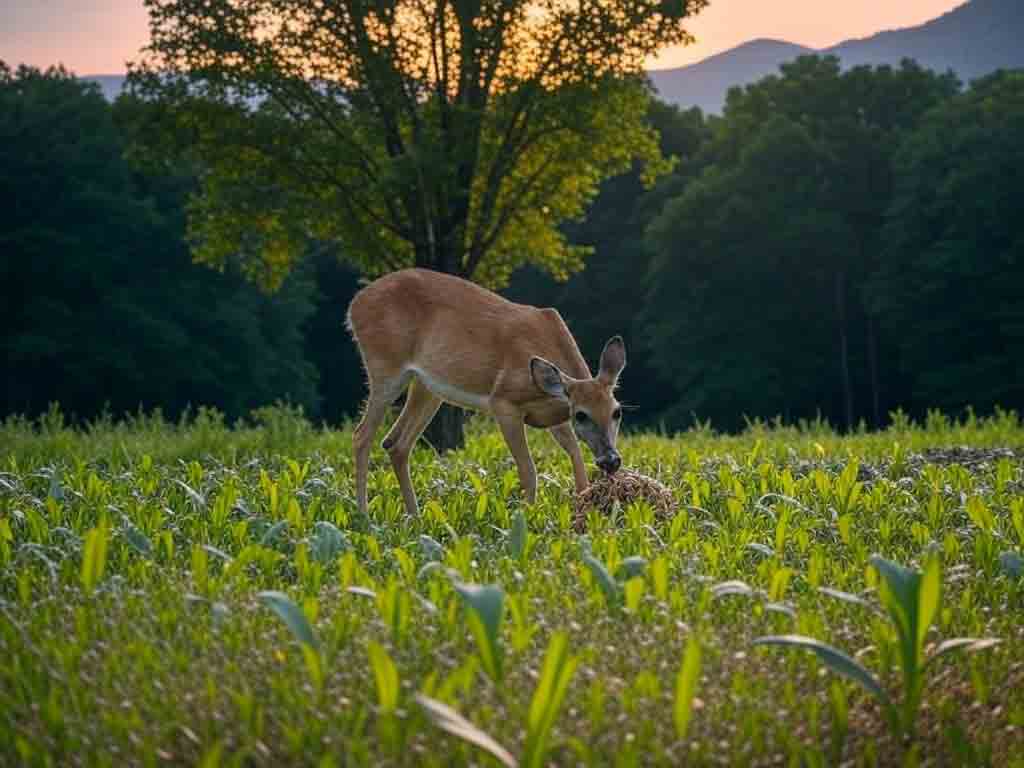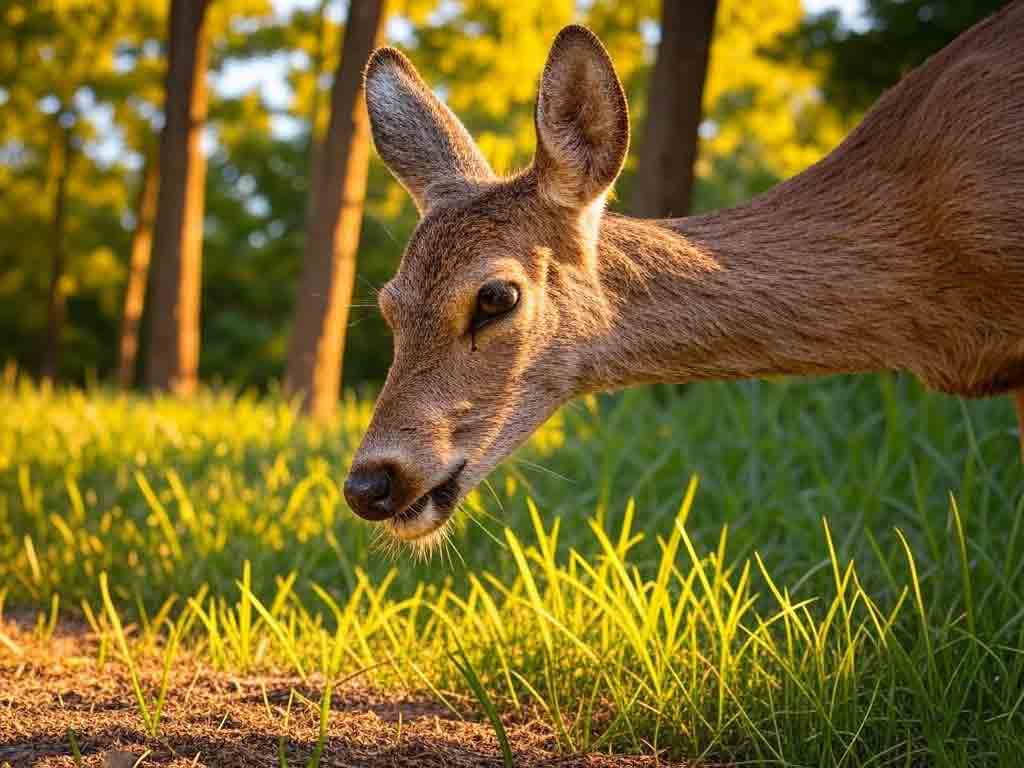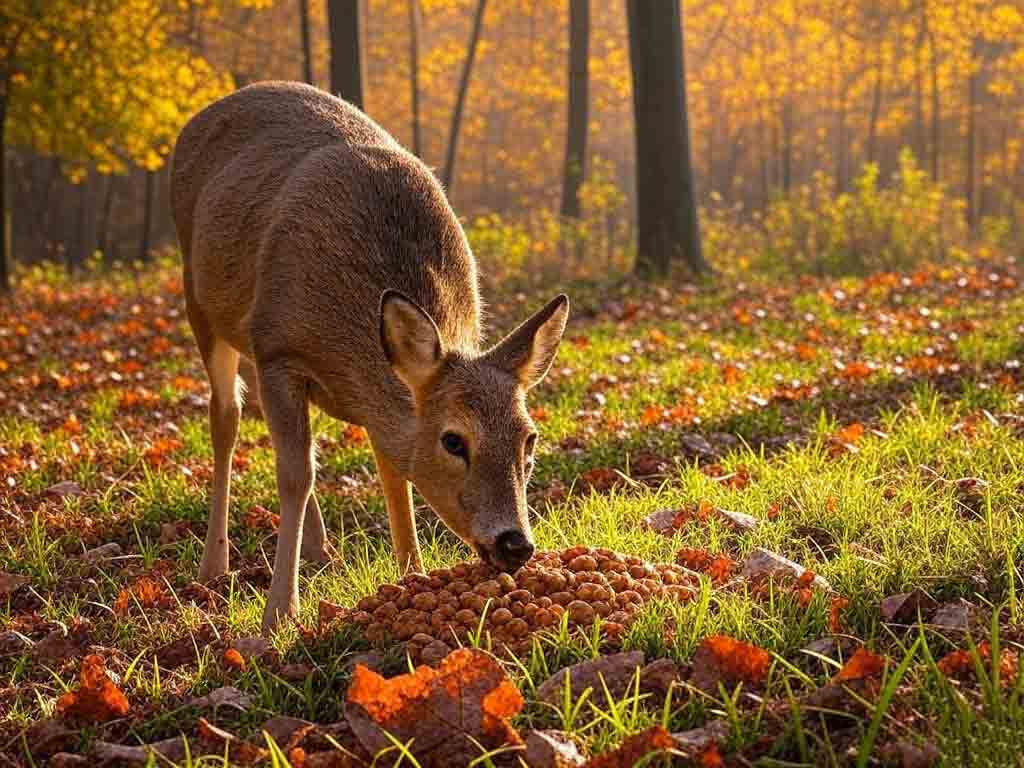Want to roll out the red carpet for deer and make your backyard their five-star dining spot? A deer food plot might be your ticket. Essentially, it’s a cultivated patch of land designed to attract deer with tasty, nutritious forage. Whether you’re a hunter or just love watching wildlife, this guide will walk you through creating the perfect deer food plot. First, we’ll cover location, then planting, timing, benefits, drawbacks, and maintenance—all with a dash of fun.
Moreover, for hunters especially, deer food plots can up your game. They draw deer in, boost their health, and keep your freezer stocked. Let’s dive in and see how to make it happen.

What Exactly is a Deer Food Plot?
A deer food plot is a designated area you cultivate to feed deer. Think of it as a buffet you plant with crops like clover, alfalfa, or corn. Naturally, these plots attract deer to your property and keep them coming back. Plus, they enhance nutrition and hunting opportunities.
Moreover, hunters and wildlife fans love them for a reason. For example, by offering a steady food source, deer food plots support local populations—especially in winter when natural forage is scarce. In short, they’re a win-win for deer and you.
What Makes a Deer Food Plot Irresistible?
Location is the name of the game for a top-notch deer food plot. You can’t just plop it anywhere and expect deer to RSVP. After all, they follow daily and seasonal patterns, so you need to know their habits.
First, proximity to cover is key. Deer munch in food plots but bolt to safety nearby. Ideal spots sit next to thickets, woodlands, or natural shelters. This setup keeps them comfy while they chow down.
Second, sunlight matters. Your plot needs at least four hours of direct sun daily to thrive. Shaded spots stunt growth, so pick a sunny area for lush, deer-tempting plants.
Third, consider wind direction if you’re hunting. Position your stand so your scent doesn’t spook deer. A longer, narrower plot shape works best—it maximizes the edge effect, giving deer cover and easy access.
Fourth, size-wise, small plots (1/4 to 1 acre) suit hunting, while larger ones (several acres) feed more deer. Finally, test your soil before planting. Check pH and nutrients, then tweak with lime or fertilizer for prime results.

What to Plant in Your Deer Food Plot
Choosing the right menu for your deer food plot is crucial. Here’s a rundown of top picks:
Clover
First, clover’s a deer favorite, packed with protein. It’s great for nutrition and can stick around as a perennial with proper care—like mowing to keep it tender.
Brassicas
Second, turnips, radishes, and kale are tough winter options. These brassicas offer late-season forage, with bulbs and leaves deer can’t resist.
Cereal Grains
Third, oats, wheat, and rye bring carbs to the table. They grow fast, making them perfect for fall and winter deer food plots when other food fades.
Legumes
Fourth, soybeans and cowpeas are nutrient-rich and lure deer from spring to early fall. They’re a solid summer choice for your plot.
Annuals vs. Perennials
Finally, annuals like grains give quick forage for hunting season. Perennials like clover last year-round with less replanting. Mix them for variety and steady appeal.
When to Plant Your Deer Food Plot
Timing’s everything with deer food plots. To begin, start early to let your plot mature and draw deer in.
For perennials like clover, spring is ideal. Plant after the last freeze, though it may not peak by fall hunting season. Still, sooner is better.
For annuals like grains, aim for late summer or early fall—mid-August to early September in most areas. Adjust for local frost dates to keep it green for hunting.
Before you sow, prep the soil. Test it, add amendments, and watch your plot flourish into deer central.

Why Deer Food Plots Work Wonders
Deer food plots are a game-changer for several reasons. First, they dish out high-quality forage. This boosts deer health and can even grow bigger bucks.
Second, they concentrate deer activity. A reliable food source makes their moves predictable—gold for hunters setting up stands.
Finally, deer flock to abundant food. When natural sources dry up, your plot becomes their go-to spot, keeping them on your land.
Drawbacks to Watch Out For
Deer food plots aren’t perfect, though. For starters, deer might lean too hard on them, messing with natural foraging habits. You want them hungry enough to visit, but not dependent.
Next, hunting pressure can backfire. Overhunt your plot, and deer get wary—or vanish. Balance is key to keep it effective.
Also, setup and upkeep cost time and cash. Soil tests, seeds, mowing—it adds up. However, the rewards can outweigh the effort.
Lastly, other critters like turkeys, rabbits, or hogs might crash the party. This boosts biodiversity, but hogs especially can trash your plot. Control them if needed.
Maintenance Tips for Deer Food Plots
Keeping your deer food plot thriving takes work. Here’s what to do:
Soil Testing
First, test soil yearly for pH and nutrients. Adjust with lime or fertilizer to keep plants healthy and deer happy.
Weed Control
Second, weeds steal nutrients from your crops. Use herbicides carefully or weed by hand to protect your plot.
Fertilization
Third, fertilize once or twice a year, based on soil tests. This keeps your forage lush and nutritious.
Planting Schedule
Finally, annuals need replanting yearly, while perennials like clover just need occasional mowing or overseeding. Stay on top of it.
Year-Round Maintenance Tricks
Beyond basics, tweak your maintenance by season. In spring, overseed perennials and prep soil for annuals. Then, in summer, check for weeds and mow to keep clover fresh.
Next, fall is prime time—plant annuals and monitor hunting pressure. Finally, in winter, assess soil and plan for spring. Consistent care keeps your plot a deer magnet.
Wrap-Up: Your Deer Food Plot Payoff
Building a deer food plot blends agriculture with hunting savvy. First, pick a killer location, then plant smart, and maintain it diligently. The result? More deer, better hunts, and a healthier herd.
It’s not a walk in the park—time and effort are musts. But the payoff is huge: a stocked freezer and happy deer. Consequently, for homesteaders or hunters feeding their families, it’s a no-brainer.
Got a deer food plot success story? Or questions on starting yours? Drop them in the comments below. Let’s keep the conversation going—happy hunting!
Check out Cover Crops and Their Uses for information about more ways to take care of your backyard paradise.
